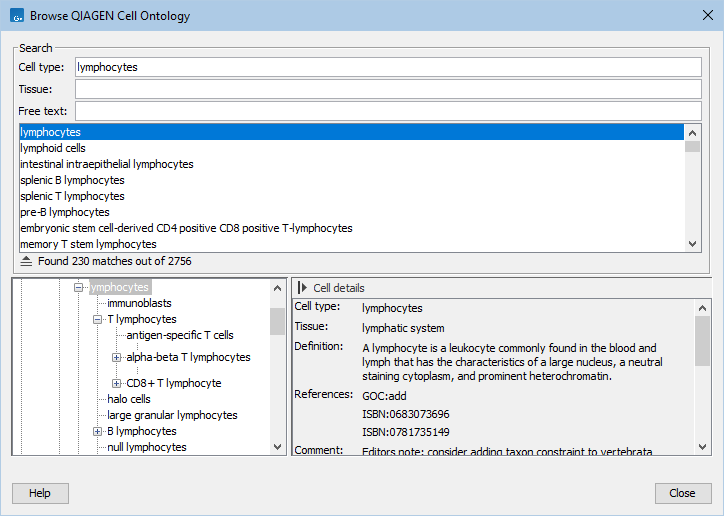Cell type refinement
When a Cell Clusters element is provided in Clusters, the initial predicted cell types are refined where possible, such that cells in the same cluster either have the same predicted cell type or share a parent cell type:
- Cell type refinement is applied, independently, to both "Cell type (all)" and "Cell type (high confidence)", see The output of Predict Cell Types.
- First, a dominant cell type is identified for each cluster:
- The most frequent cell type, if it is predicted for at least `Minimum dominant cell type in cluster (%)' cells. Otherwise:
- The most frequent parent cell type that is not "normal cells", if `Include parent cell type in dominant cell type calculation' is enabled and at least `Minimum dominant cell type in cluster (%)' cells have this cell type or are descendants from it.
If no dominant cell type is identified, refinement is not performed for this cluster.
- All cells in the cluster are reassigned to the dominant cell type if:
- The probability of the initial predicted cell type is at most `Do not refine cells with probability above'. And:
- The initial predicted cell type is not a descendant of the dominant cell type.
- When applying cell type refinement to "Cell type (high confidence)":
- Cells predicted as "Unknown" (see The output of Predict Cell Types) are disregarded when calculating frequencies for the dominant cell type.
- Refinement is performed only in clusters where the percentage of cells that are not predicted as "Unknown" is equal to or above `Minimum high confidence cells in cluster (%)'.
Consider a cluster where the following cell types are predicted:
- 20% of the cells are alpha-beta T lymphocytes,
- 35% of the cells are T lymphocytes,
- 30% of the cells are B lymphocytes, and
- the remaining 15% are other cell types that are not descendants of lymphocytes.

Figure 8.3: View of the QIAGEN Cell Ontology showing lymphocytes, T lymphocytes, alpha-beta T lymphocytes and B lymphocytes.
However, alpha-beta T lymphocytes have T lymphocytes as a parent cell type, and T lymphocytes and B lymphocytes have lymphocytes as a parent cell type (figure 8.3). Using `Include parent cell type in dominant cell type calculation', the frequency for the parent cell types is calculated:
- 55% of cells are predicted as T lymphocytes or are descendants of T lymphocytes.
- 85% of cells are descendants of lymphocytes.
Lymphocytes represent the dominant cell type since their percentage exceeds `Minimum dominant cell type in cluster (%)'. The remaining 15% of the cells will therefore be refined as lymphocytes.
